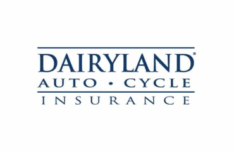In the world of farming, managing risks effectively can mean the difference between a prosperous year and a financially devastating one. Crop insurance serves as a vital tool for protecting agricultural businesses against the unpredictable nature of farming. However, comprehending the complexities of crop insurance policies, particularly the inclusions and exclusions, can be daunting. This article aims to demystify these complexities, providing farmers and agricultural business owners with a clear understanding of what is covered under their policies and what is not. By mastering the fine print in crop insurance policies, you can ensure that your farm is appropriately protected, enabling you to concentrate on what you do best: growing and harvesting.
Following this introduction, the article will delve into sections that outline important exclusions often found in crop insurance policies, highlight typical inclusions, and provide tips on how to effectively read and understand the specifics of these documents. The objective is to equip you with the knowledge needed to make informed decisions about your crop insurance coverage, ensuring that you are adequately prepared for the various challenges that may come your way.
Understanding Common Exclusions in Crop Insurance
Crop insurance policies are designed to mitigate the risks associated with agriculture, such as adverse weather conditions, fire, or disease outbreak. However, not all potential risks are covered. Common exclusions typically include:
Damage Due to Poor Farming Practices
Insurance providers often exclude losses that result from inadequate maintenance, improper application of agricultural treatments, or neglect. It's crucial for farmers to adhere to approved farming methods to ensure their eligibility for claims.
Government Actions and Other Third Party Influences
Losses resulting from government or legal actions, such as an embargo, or conflicts, are usually not covered. Similarly, damage caused by third-party contractors (unless specifically covered) is also excluded from typical crop insurance policies.
Understanding these exclusions is vital. Farmers need to manage risks through other means, like better internal controls and clear contracts with third parties, to complement their insurance coverage.
Key Inclusions in Crop Insurance Policies
While exclusions are critical, knowing what your crop insurance does cover can give you a peace of mind. Common inclusions encompass:
Weather-Related Damages
Arguably, the core of most crop insurance policies is protection against weather anomalies such as droughts, floods, and hail. These natural events are unpredictable and can be devastating.
Pest and Disease Outbreaks
Many policies include coverage for losses due to outbreaks of disease or pest infestations, provided that these incidents are sudden and not due to gradual infestation or poor farm management.
Revenue Protection
Beyond physical damages, some policies offer revenue protection to safeguard farmers from price fluctuations and yield losses, ensuring the financial stability of the farm regardless of market conditions.
Each inclusion is crucial for maintaining the financial continuity of a farming operation and can be tailored according to the specific needs of a farm.
Deciphering Policy Clauses and Terms
Understanding the specific language and clauses in your crop insurance policy is essential to effectively leveraging your coverage. Here’s what to look out for:
Named Peril versus All-risk Policies
Named peril policies cover only the risks that are explicitly stated in the policy document, whereas all-risk policies cover all perils unless they are specifically excluded. Recognizing the type of policy you have impacts how you plan your farming risk management.
Deductibles and Limits
Be sure to understand the deductibles and limits associated with your policy. A deductible is the amount you will need to pay out of pocket before the insurance covers the rest. Limits, on the other hand, cap the maximum amount the insurer will pay for a covered event.
Loss Reporting and Claims Process
Familiarize yourself with the process for reporting a loss and filing a claim. Timely reporting and adherence to the claims process are critical for the successful settlement of a claim.
Efficiently navigating these policy clauses can significantly influence the management of your farming risks and protection of your investment.
Integrating Crop Insurance into Your Risk Management Strategy
Crop insurance should be part of a broader risk management strategy that includes:
Diversification of Crops
Growing different types of crops can reduce the likelihood of a total loss due to a disease affecting only one type of crop. Diversification also spreads economic risk.
Regular Monitoring and Reporting
Keeping detailed records and closely monitoring crop health and environmental conditions can help identify issues early before they lead to significant losses.
Legal and Compliance Considerations
Staying compliant with agricultural regulations and maintaining clear legal standings on land use and environmental impact will further mitigate risks that are typically not covered by crop insurance.
By integrating these practices with your crop insurance, you create a comprehensive shield for your agricultural operations, enhancing stability and sustainability.
Future-Proofing with Updated Policies
The realm of agriculture continually evolves with advancements in farming technology and changes in environmental conditions. As such, it’s imperative that:
Annual Policy Reviews
Conduct annual reviews of your crop insurance policies to ensure they are in line with current farming operations and market conditions. As you expand or alter your practices, your policy needs to evolve too.
Consideration of Emerging Risks
Emerging risks, like cyber threats related to agricultural technology, should also be considered in modern crop insurance plans. Engage with your insurance provider to discuss coverage options for newer risks.
Updating and future-proofing your crop insurance not only ensures adequate current coverage but also prepares your farming operation to handle future challenges effectively.
Securing Your Agricultural Future
Understanding the intricate details of your crop insurance policy’s exclusions and inclusions forms the cornerstone of a robust agricultural risk management strategy. By comprehensively evaluating your policy, integrating savvy farming practices, and staying informed on emerging risks, you equip your farm to not just manage but strategically counteract potential threats. This proactive approach not only protects your immediate crops and revenue but fortifies the sustainability and growth potential of your farming operations.
Ready to strengthen the roots of your agricultural business with tailored farm and crop insurance solutions? Connect with us at Herrera Insurance Agency. We specialize in providing detailed, farm-specific insurance options that cater directly to your needs. Ensure your farm's future is secure by reaching out today for a personalized consultation and pave the way for a flourishing agricultural legacy.

















